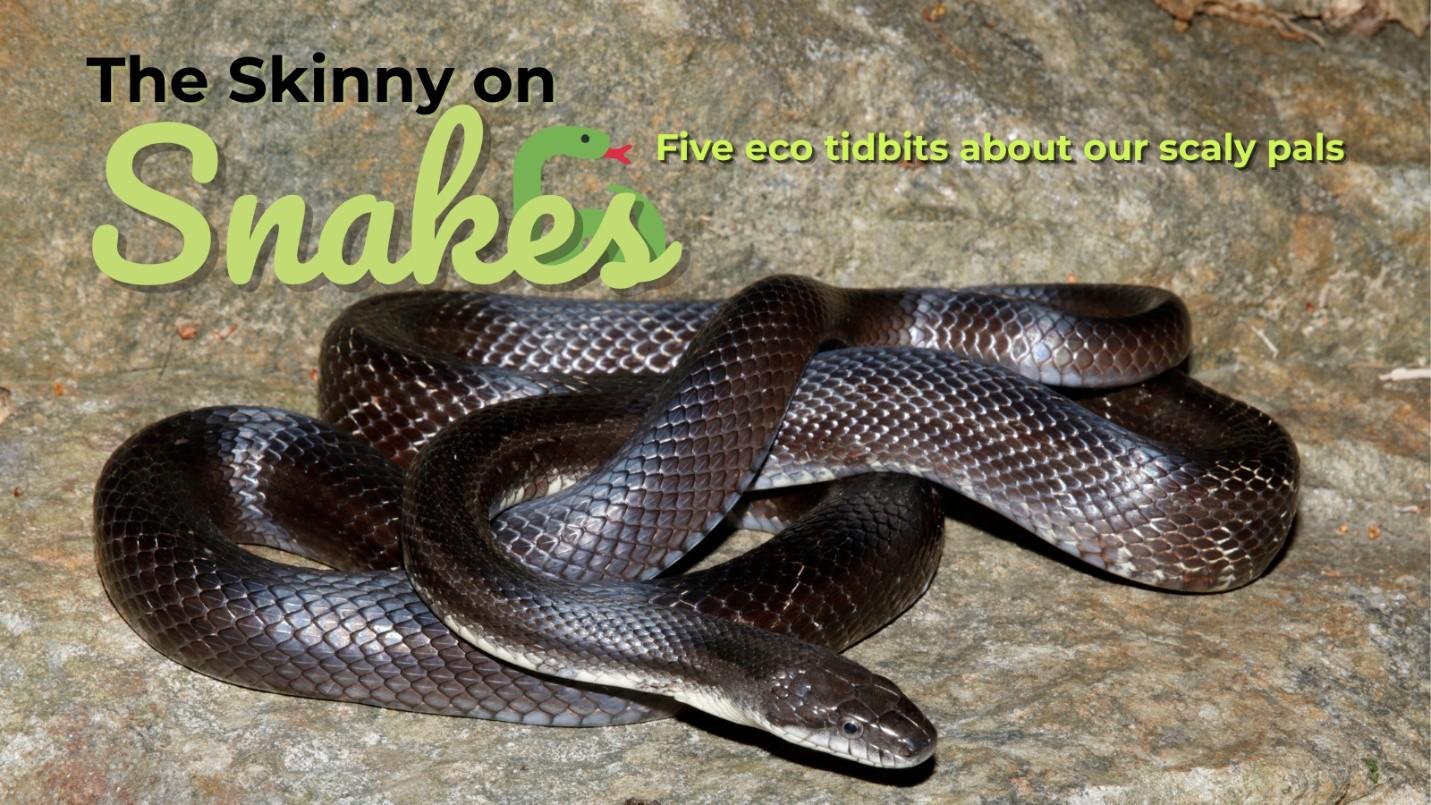Snakes: 5 Environmental Benefits

When many people see snakes out in the wild the first thought that comes to mind is, “Oh no, it’s a snake. Run away!”
Before you run too far, there are some things you should know about snakes. While Delaware, New Jersey, and Pennsylvania each have about 20 or so native snake species statewide, fewer than 20 are known to the Delaware River region. Of those, only a couple are venomous (the Eastern copperhead and the rarer timber rattlesnake) and they mostly keep to themselves. Although the other snakes might seem scary, they are harmless to humans. In fact, snakes benefit the environment and people in a number of ways. Here are five:
1) Natural Pest control: Snakes consume large numbers of rodents, insects, and small animals that can damage crops and infest houses. In addition to pest control, snakes control the spread of diseases that these rodents carry.
2) Seed Dispersal: There are some cases where snakes indirectly help with seed dispersal. If a snake eats a rodent that had eaten a seed, the snake can move and deposit the seed far from the original plant.
3) Nutrient Cycling: Whatever animal becomes a snake’s dinner, their nutrients are redistributed back into the soil through the snake’s waste. Similarly, when the snakes become prey themselves, their own nutrients are put back into the soil the same way.
4) Ecosystem Health Indicators: Snakes are sensitive to environmental changes and pollutants, making them an “indicator species.” The size and health of the snake population can indicate the health of the ecosystem. If there is a large and healthy snake population in the local ecosystem it suggests that the food web is stable and the environment is healthy.
5) Medicinal Use: Snake venom can be used to create either anti-venom or a variety of other medicines.

